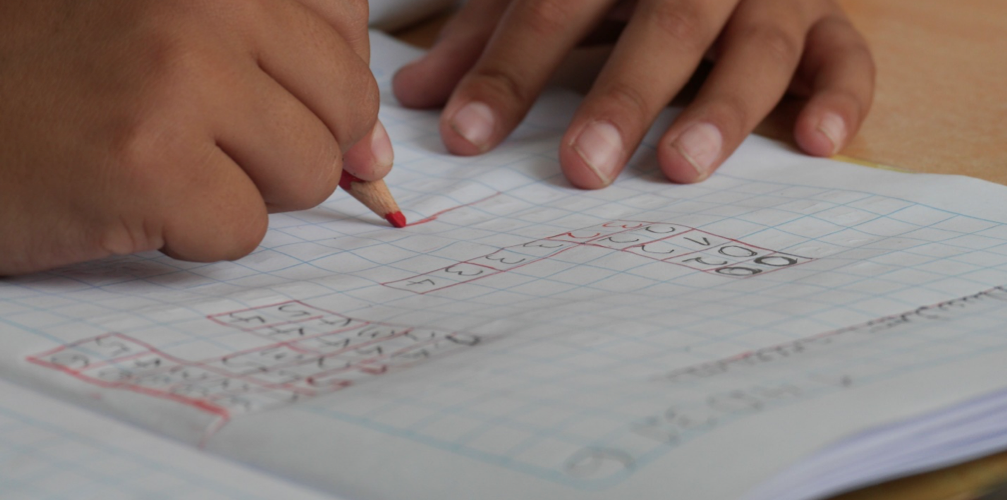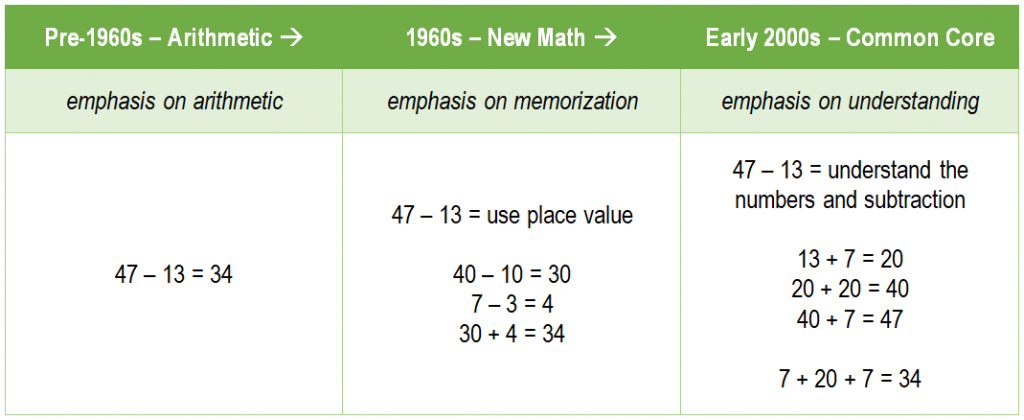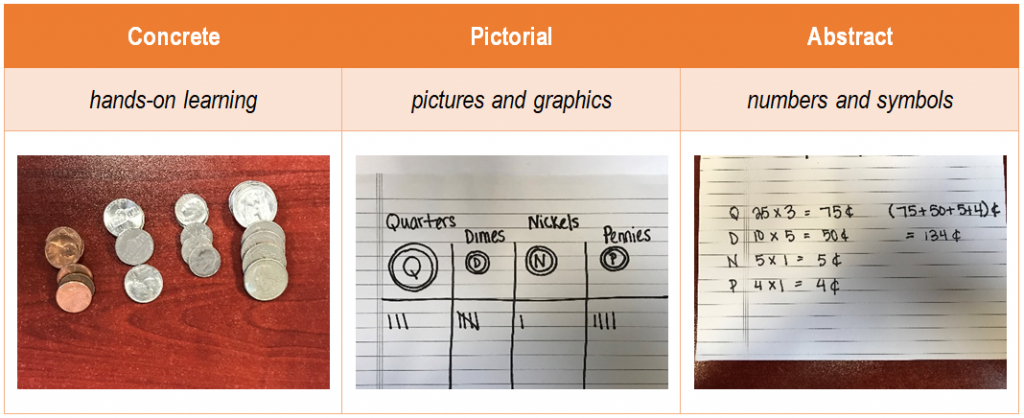 It’s pretty common to hear an adult say something like, “That’s not the way I learned to do that,” when kids try to explain what they’ve learned in math class. Particularly when they need some help to figure out the homework. In fact, parents or grandparents have probably asked, “Why do you need to learn that? I never learned that as a kid!”
It’s pretty common to hear an adult say something like, “That’s not the way I learned to do that,” when kids try to explain what they’ve learned in math class. Particularly when they need some help to figure out the homework. In fact, parents or grandparents have probably asked, “Why do you need to learn that? I never learned that as a kid!”
Though it may seem like kids in this generation are learning math in new, or even ridiculous ways, math classes in the United States haven’t changed as much as you’d think since the 1960s. In fact, the emphasis of the math curriculum has changed more than the math itself.
Why Is Math Different Now?
60 Years of Math Education
Math education in the United States has had a tumultuous relationship with parents and students for the last 60 years. Prior to the 1960s, math education in elementary and secondary grades consisted mostly of learning arithmetic calculations like addition, subtraction, multiplication, and division. However, the race to be the first nation into space catapulted US math education forward at a somewhat irregular pace.
When the Soviet Union launched its satellite, Sputnik, in 1957, it caused an uproar in the United States. That uproar resulted in huge reforms to math and science education. Though a relatively short-lived change, the “New Math,” as it was called, focused on turning out a generation of students who had a greater understanding of mathematics and science in order to be more competitive with other nations.
It wasn’t until 2009 that new standards, in the form of the Common Core State Standards Initiative (CCSS) were developed to align math education plans across the nation. The big change in this case was to make a better alignment of topics with a smooth transition from grade to grade across the country.
 Unlike “New Math,” Common Core doesn’t require that you use a single memorized algorithm to find solutions to a set of problems. Instead, the Common Core guidelines emphasize the method that gives you the greatest understanding of the problem, not just the solution.
Unlike “New Math,” Common Core doesn’t require that you use a single memorized algorithm to find solutions to a set of problems. Instead, the Common Core guidelines emphasize the method that gives you the greatest understanding of the problem, not just the solution.
Math Teaching Methods of the Present
While math education in the United States has evolved over the last 60 years, teachers today can theoretically choose any method they feel will best help their students learn. If there are restrictions on methods, they are mostly likely from the requirements of standardized testing or the material purchased by their schools.
One method that some teachers or school districts have chosen to use is commonly called “Singapore Math.” In fact, that’s one of the methods that can be most confusing to parents or grandparents who learned when the emphasis was on memorization.
Singapore Math
Singapore Math is a math curriculum originally used for pre-kindergarten through 6th grade math in Singapore. This method promotes a three-step process that allows students to learn fewer math concepts with a greater level of understanding. Students learning math through the Singapore Math method will be introduced to the concept with concrete representations first, then with pictorial depictions, and finally with abstract problems.
 This type of curriculum has proven very effective by assessment data gathered through the Trends in Mathematics and Science Study (TIMSS), an international student achievement assessment, so it may very well be effective in school districts in the United States if it were to be fully and consistently adopted by all school districts.
This type of curriculum has proven very effective by assessment data gathered through the Trends in Mathematics and Science Study (TIMSS), an international student achievement assessment, so it may very well be effective in school districts in the United States if it were to be fully and consistently adopted by all school districts.
The adoption of Singapore Math by more and more schools and teachers in the United States is another step on the path of evolving education strategies. Remember: the current goal is to give students a greater understanding of math from a real world perspective. That means that while parents can expect to see some differences in how their children do their homework, they can also feel assured that these math techniques are designed to improve understanding – they’re not necessarily new or used just because current math standards require it.
What are some other big differences you have seen in math education of your children? Do you have any questions about new math methods?
Author: Nicole Acevedo, Teacher Manager at A Grade Ahead
